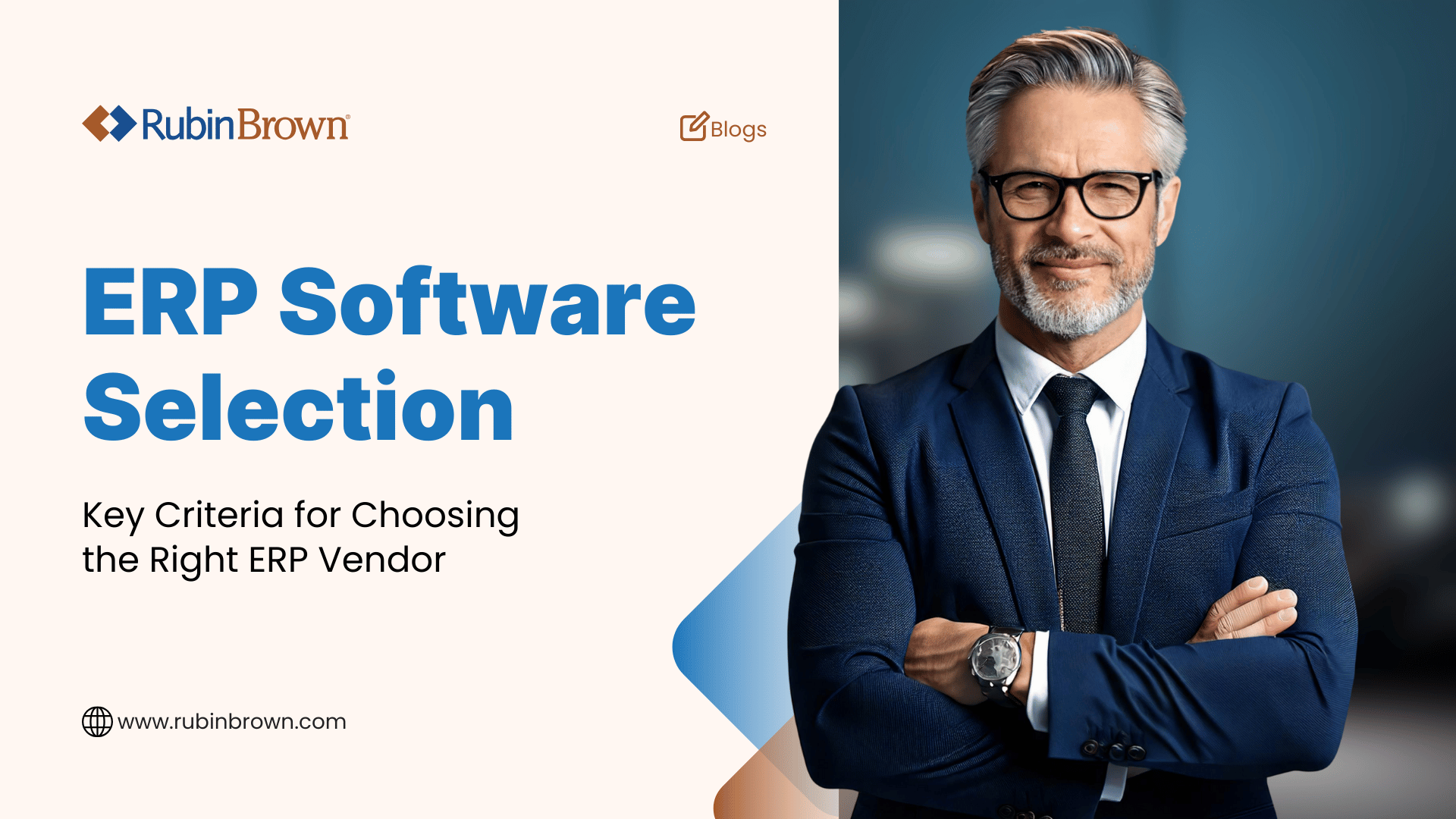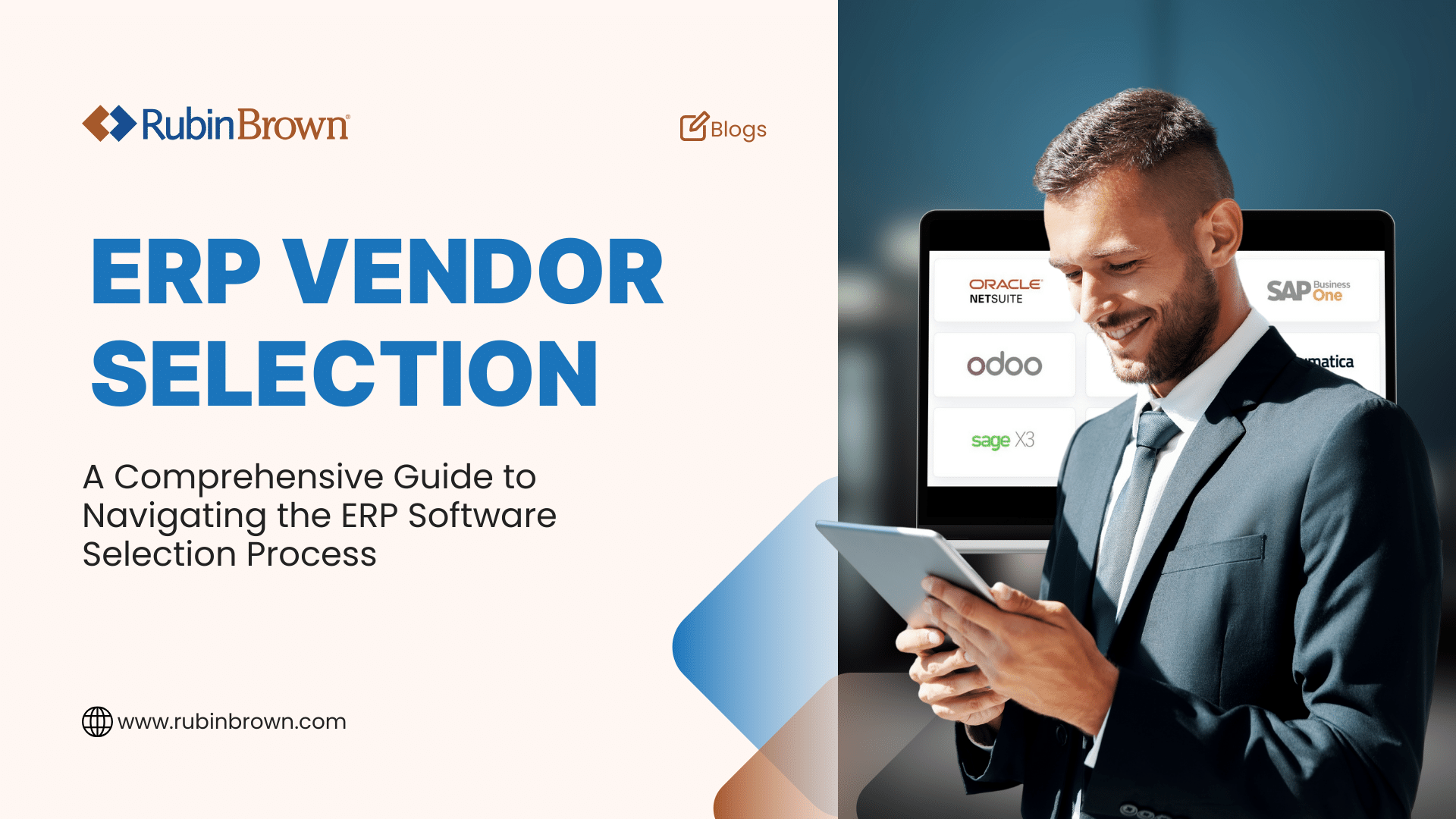ERP Software Selection Process: How to Choose the Right System
The ERP software selection process determines whether a company gains efficiency or faces costly setbacks. Gartner reports that up to 75% of ERP...
6 min read
KPC_Admin : Nov 1, 2024 4:08:08 PM

Selecting an ERP system involves careful evaluation of ERP software and vendors, each with unique capabilities and benefits, as outlined in the ERP selection checklist and implementation process. With the right ERP software selection process, businesses can identify the best ERP system for your business, ensuring a smooth ERP implementation. This guide provides an in-depth look at ERP selection criteria, a checklist to assess vendors, and insights into building a selection team to ensure successful ERP software selection for your organization. From understanding ERP requirements to evaluating software vendor compatibility, find everything you need to create an ERP selection checklist for informed decision-making.
An ERP (Enterprise Resource Planning) system is a comprehensive software solution that centralizes critical business functions, such as finance, inventory, human resources, and supply chain management. Selecting the right ERP software is essential to improving operational efficiency, data accuracy, and decision-making capabilities. A well-chosen ERP system can integrate previously siloed business processes, providing a single source of truth for real-time data and enabling more informed strategic planning.
For businesses seeking growth, a well-integrated ERP system can be transformative, streamlining daily operations, reducing redundancy, and improving customer satisfaction. Conversely, selecting the wrong ERP software can lead to costly inefficiencies, operational disruptions, and unmet business needs, making the ERP software selection criteria crucial for the long-term success of your ERP.
Choosing ERP software that aligns with your business objectives requires a thorough understanding of selection criteria that directly impact operational effectiveness. To start, assess the functional requirements essential to your business, ensuring that the ERP software can support critical functions like financial management, inventory control, customer relationship management (CRM), and production planning. An ERP system that meets these core needs will streamline operations and improve efficiency across departments.
Scalability is another key factor to consider, as your ERP system should be able to grow with your business. Choose ERP software that can handle an expanding volume of data, users, and increasingly complex processes as your operations evolve. This scalability ensures that the ERP system remains a valuable asset, accommodating future growth without requiring significant overhauls.
Customization options are also crucial in ERP selection, as they allow the software to be adapted to your unique business processes. Many ERP vendors provide modular options that make customization easier, enabling businesses to tailor the system to specific workflows or industry requirements. Additionally, vendor reliability and support play a significant role in ERP performance and user satisfaction. It’s important to evaluate the vendor’s track record, quality of customer support, and commitment to regular software updates, as these factors can greatly influence the ERP’s long-term effectiveness.
By considering these criteria, businesses can find an ERP solution that meets current operational needs while providing the flexibility to adapt to future demands, ensuring both immediate functionality and long-term value.
Before beginning the ERP software selection process, it’s essential to thoroughly document your organization’s ERP requirements. This preparation ensures that the selection process aligns closely with the unique needs of your business. The first step is to identify core business needs by determining which departments and functions would most benefit from ERP capabilities. Focusing on areas that would see the greatest improvements from increased automation and integration, such as finance, inventory, or customer service, can significantly streamline operations and enhance productivity.
Next, it’s important to map existing business processes, outlining current workflows and identifying pain points that an ERP system could improve. Issues such as slow order processing or redundant data entry across departments are often signs of inefficiencies that an ERP system can address, highlighting the importance of a thorough ERP software vendor selection process. Documenting these issues creates a clear understanding of where the ERP system should bring immediate benefits.
The final step is to define specific ERP software needs, using an ERP requirements template to guide this process. This involves deciding which ERP modules are required—finance, supply chain, or human resources, for example—and specifying any industry-specific features, such as manufacturing execution systems for production. Clearly defining these business requirements will ensure the ERP software selection criteria are focused and guided by well-defined business needs, reducing the risk of costly modifications post-implementation.
Successful ERP selection involves input from a cross-functional team that includes representatives from IT, finance, and operations. Each department contributes critical insights to ensure the ERP system aligns with business needs across the organization. The IT department is responsible for assessing technical requirements, focusing on integration with existing software, data migration, and cybersecurity concerns during the requirements gathering phase. Their expertise ensures that the ERP system is compatible with the company’s current technology stack and can be implemented securely.
The finance department plays an essential role in evaluating budgetary considerations, analyzing ROI, and assessing ERP software costs over the software’s lifecycle, particularly when selecting a vendor. Their input helps ensure that the ERP investment remains financially viable and aligns with long-term budget goals. The operations team provides valuable insights into daily operational requirements, ensuring that the ERP software supports the needs of front-line staff. This alignment is crucial for practical ERP functionality and user adoption, as the system must streamline tasks and improve efficiency for those who rely on it most.
By involving key stakeholders from each department, businesses can create a comprehensive ERP selection process that addresses the needs of all end-users, facilitating a smooth transition to the new ERP system and maximizing its impact on organizational performance.
Shortlisting ERP vendors requires a systematic approach to ensure the best fit for your organization. To start, consider consulting reputable sources for ERP vendor rankings and reading case studies or user reviews, as these insights provide valuable perspectives on vendor reliability and performance. Explore our guide on top ERP vendors & solutions for a deeper dive into leading options available today.
Next, make use of ERP comparison tools to quickly narrow down vendors based on key features, functionality, and pricing. These tools allow you to evaluate and compare ERP systems side-by-side, highlighting which options are best suited to meet your operational needs and budget. Finally, sending a Request for Proposal (RFP) to shortlisted vendors is a critical step that offers an in-depth understanding of each vendor’s capabilities, costs, and timelines. The RFP process provides detailed information that supports an informed decision by clarifying what each ERP vendor can deliver in terms of system functionality and support.
Effectively comparing new ERP software solution requires a careful analysis of deployment options, licensing terms, and the degree of customizability each system offers. A critical first step is to evaluate deployment options for the new ERP system. Businesses should decide between cloud-based, on-premises, or hybrid ERP systems based on their specific security requirements and accessibility needs. For instance, cloud ERP systems offer the advantage of remote access and generally lower infrastructure costs, while on-premises ERP may be preferred by organizations with stringent data security or regulatory compliance requirements. Hybrid options provide a balance, combining on-site control with cloud accessibility.
The cost structure is another essential factor, with subscription-based and perpetual licensing models offering distinct advantages depending on the business’s growth trajectory and budget. Subscription models, typically used in cloud ERP solutions, allow for predictable monthly or annual costs and are often easier to scale with the business. Perpetual licenses, meanwhile, involve a one-time investment and may be more cost-effective for companies planning to use the ERP software over an extended period.
Lastly, customization and flexibility are crucial to ensure the new ERP solution adapts as business processes evolve. An ERP system that offers high customizability can be tailored to fit unique operational needs, allowing it to grow alongside the organization and meet evolving business requirements. Together, these considerations help businesses find an ERP solution that not only addresses current needs but also provides long-term adaptability, supporting both immediate functionality and future scalability.
A successful ERP implementation relies on a structured process that begins with comprehensive project planning. This initial phase involves defining the project’s scope and timeline and assigning roles to ensure accountability across teams. Effective planning sets the stage for a clear and organized ERP implementation, helping teams anticipate challenges and align on objectives.
Data migration and testing are also crucial components in ensuring a smooth transition to the new ERP system. Preparing for seamless data migration and conducting thorough testing allows teams to identify and resolve potential issues early, minimizing disruptions and protecting data integrity. Training employees on the new ERP workflows is essential for reducing resistance to change and fostering smooth adoption. Training sessions should focus on the features relevant to each role, empowering employees to use the system confidently from day one.
Finally, full deployment of the ERP system requires ongoing monitoring and support to address any issues that arise. With continued oversight, businesses can troubleshoot effectively, ensuring that the ERP system functions optimally. By carefully planning each stage of the ERP implementation, businesses can avoid common pitfalls and make the transition to the new system as smooth as possible.
Selecting the right ERP software is essential to improving operational efficiency, data accuracy, and decision-making capabilities. Rubin Brown’s ERP Advisory team provides comprehensive support for every stage of the ERP journey, from clarifying business requirements and vendor evaluation to implementation and optimization, ensuring the success of your ERP. Our tailored approach, informed by industry expertise, helps clients make well-informed decisions that drive value and mitigate risk throughout the ERP lifecycle.
To learn how Rubin Brown can support your ERP selection and ensure a successful implementation, contact us today to schedule a consultation. Our specialists are ready to partner with you to create a customized ERP strategy that meets your unique business objectives

The ERP software selection process determines whether a company gains efficiency or faces costly setbacks. Gartner reports that up to 75% of ERP...

ERP implementations are rarely a straightforward process. In fact, nearly 50% of ERP projects fail on their first attempt, often due to poor...

1 min read
About 70% of ERP implementations exceeded their budget, according to CIO Insight. These overruns often trace back to one root cause: choosing an...